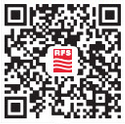If you can't take the heat: A guide to fire safe communications equipment
No one likes to think about the worst-case scenario. Even the most pessimistic thinker does not want to fill their days considering what happens if there is a fire in a high-rise or metro tunnel. However, it is an ever-increasing priority for the communication industry and with good reason.
Being able to communicate is a basic expectation, but in the event of a fire it becomes absolutely critical. It may not stop the fire itself, but it enables emergency responders and safety officials to address the incident in the safest way possible, both for themselves and those caught up in the fire. It is this vital role that means that those responsible for the procurement of communications equipment must consider the worst-case scenario when choosing infrastructure.
Up high and down low
Firstly, let’s look at two of the typical environments where fire safe communication coverage is both vital and also a significant challenge: high-rise buildings and in tunnel deployments. Despite one scenario reaching for the sky while the other sits underground, they share many of the same communication challenges. They need additional dedicated infrastructure to provide reliable connectivity throughout.
Without this, they are not only unable to meet the current day demands for connectivity but cannot enable critical communications in the event of a fire for example. If a fire causes them to fail, there isn’t a work around or quick fix to delivering connectivity, the ability to support safety communications just isn’t there. The result is an unnecessary and avoidable risk for both occupants and emergency crew as they are left isolated and without the ability to communicate the safest way to manage the situation.
Fire safe infrastructure
Knowing how critical this infrastructure is, procurement teams must select equipment that is able to deliver coverage even in the most extreme environments. There is increasingly stringent regulation to ensure that fire safety is a priority when choosing communications equipment. Although the requirements vary between regions, there are universal qualities needed to meet fire safety regulations.
Equipment must be able to withstand the temperatures associated with a fire. In a high rise situation for example, most fires begin on floors no higher than the 6th story. If the communications equipment is affected by fire, it takes out connectivity on both the floor on which the fire started and every floor above, adding fuel to an already dangerous situation. Beyond maintaining communication, the cable itself must remain safe in the event of the fire. This means any casing should not drip as it melts, causing possible harm to anyone in the surrounding area. So with these requirements in mind, how can procurement teams ensure that they adhere to fire safety regulations when it comes to communications equipment.
Fire safety at the heart of innovation
At RFS, working closely with our customers to ensure the solutions we design meet their needs mean fire safety has been a priority for our teams for a number of years. As a global company we make sure that our portfolio includes solutions that meet regulatory requirements in every geography.
US
At RFS we focus on stand-alone fire safe solutions, rather than encasing equipment in fire safe conduit. This led us to develop our DragonSkin™ cable for the US market. This is the first in-building coaxial cable to pass the stringent UL 2196 certification test without use of a metal conduit or extensive wrapping. The certification test subjects the cable to the high heat and water conditions that occur during severe fires in buildings, verifying the cable continues to operate despite the extreme stresses applied to it. DragonSkin™ cable survives even when it is exposed to temperatures up to 1000 °C (1850 °F) for two hours then suddenly cooled down with water from a fire hose making it one of the only solutions to meet the regulatory requirements now in place a number of jurisdictions in the United States.
Europe
For the European market, RFS offers its flagship RADIAFLEX® radiating cable which contoured RF coverage consistently and reliably without compromising on safety. It meets the highest European safety standards with all radiating cables rated CPR class B2ca s1a d0 a1 - the highest possible certification. Not only does this demonstrate the ability to maintain performance in extreme heat, the d0 subclass shows that RFS’s cable does not drip in the event of a fire meaning those nearby are not at risk from dripping, burning particles, guaranteeing maximum safety.
Future of fire safety
Fire-safe communication isn’t and shouldn’t be a day-to-day concern. This should be because it is addressed at the point of installation, meaning every environment that needs it, is prepared should the worst happen. By offering single solution fire-proof RF cable, the process of ensuring the fire safe communications becomes incredibly simple. This has and will continue to be a priority at RFS as we continue with our commitment to offer fire safe communications with no compromises.
If you would like to hear more about RFS’s extensive range of fire safe solutions get in touch with Tom Kuklo, Global Product Manager – In Building Solutions at RFS.

.jpg)
